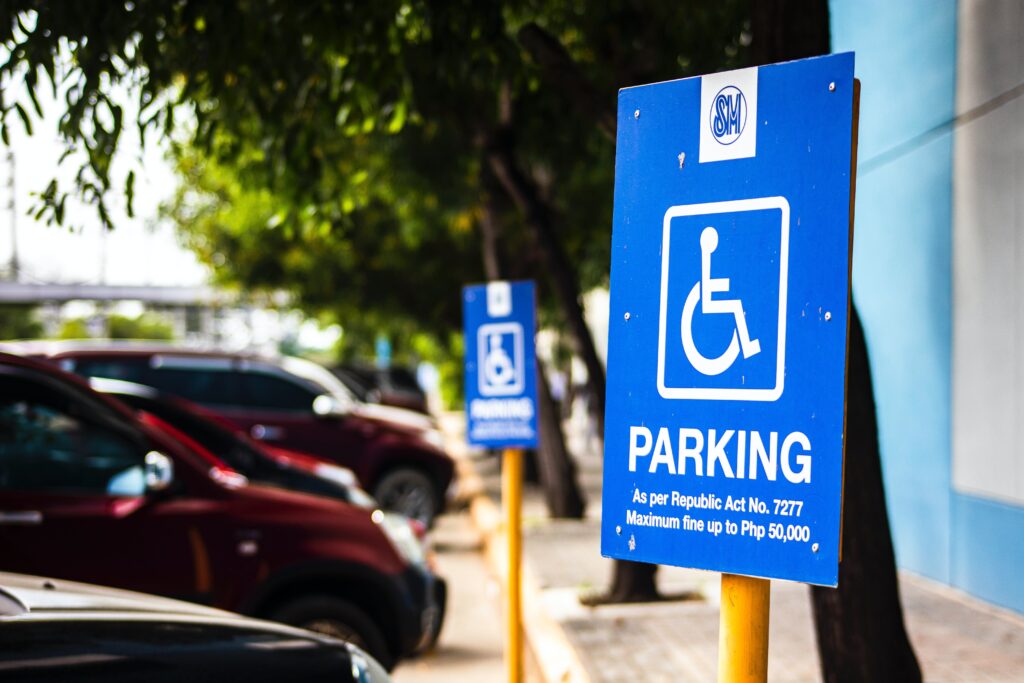National parks across the United States offer breathtaking landscapes, unique ecosystems, and outdoor adventures that attract millions of visitors each year. The natural beauty and recreational opportunities these parks provide should be accessible to everyone, including individuals with disabilities.
One of the fundamental aspects of making national parks inclusive is ensuring that handicap parking is readily available and complies with the Americans with Disabilities Act (ADA). In this article, we will explore the significance of handicap parking at national parks, the steps taken to improve accessibility, and the regulations governing parking to ensure an inclusive experience for all visitors.
Handicap Parking at National Parks
Accessible parking at national parks is an essential component of providing equitable access for all visitors. National parks are often vast, with diverse attractions spread across extensive areas. Therefore, it is vital to ensure that visitors with disabilities can conveniently access these attractions. Handicap parking spaces are strategically placed near key points of interest within the park, allowing visitors with mobility impairments to explore and enjoy the beauty of nature.
Accessible Parking in US National Parks
Accessible parking in US national parks goes beyond merely designating parking spaces. It encompasses a comprehensive approach to making the entire parking experience as accommodating as possible for visitors with disabilities. This includes well-designed parking spaces, accessible pathways to attractions, and appropriate signage.
National parks typically have designated areas for accessible parking, providing proximity to visitor centers, trails, and other points of interest. Additionally, the parking areas should have paved surfaces, ramps or pathways to ease wheelchair access, and clear signage to guide visitors to accessible parking spaces.
ADA-Compliant Parking at National Park Attractions
ADA-compliant parking at national park attractions adheres to the regulations established by the Americans with Disabilities Act. This includes not only the physical features of parking spaces but also ensuring that visitor information, signage, and services are accessible to people with various disabilities.
The ADA mandates that national parks must have a certain percentage of parking spaces reserved for individuals with disabilities. These spaces should be well-marked, maintained, and designed to accommodate wheelchair users and those with other mobility challenges. They must also be located close to accessible routes that lead to key attractions.

National Park Handicap Accessibility
National park handicap accessibility extends beyond parking spaces to encompass the overall visitor experience. National parks have made significant strides in improving accessibility in recent years, which includes constructing wheelchair-accessible paths, boardwalks, and ramps that connect parking areas to scenic viewpoints, visitor centers, and other attractions.
Many national parks now offer accessible shuttle services that provide transportation to popular destinations within the park. These shuttle services are designed to accommodate individuals with disabilities, ensuring that they can experience the park’s beauty without obstacles.
Inclusive Parking Options for Park Visitors with Disabilities
Inclusive parking options for park visitors with disabilities aim to provide choices that meet a range of needs. This includes not only accessible parking spaces but also alternative methods of reaching park attractions. In addition to designated handicap parking spaces, some national parks offer the following options:
Shuttle Services:
National parks provide shuttle services that transport visitors from accessible parking areas to various attractions. These shuttles are designed to accommodate wheelchairs and offer a convenient and inclusive way for people with disabilities to access remote areas.
Accessible Drop-Off Zones:
Many parks have designated drop-off zones near popular attractions, allowing visitors with disabilities to be dropped off close to the entrance. This feature is particularly valuable for those who have difficulty walking long distances.
Accessible Amenities for People with Disabilities in National Parks
Making national parks more inclusive involves not only accessible parking but also other amenities, such as restrooms, visitor centers, and picnic areas. These amenities should be designed and maintained to accommodate people with disabilities. They should have features like wider doorways, grab bars, and accessible sinks and countertops.
Visitor centers often have materials available in various formats, such as large print, audio, or electronic versions, to ensure that information is accessible to all. Additionally, interpretive programs and ranger-led activities should be designed to include and engage all visitors, including those with disabilities.
National Park Parking Regulations for Individuals with Mobility Impairments
National park parking regulations for individuals with mobility impairments are set by federal law and include ADA guidelines. These regulations specify the number of accessible parking spaces required, their location, and design criteria. The ADA requires that at least 2% of parking spaces be designated as accessible, with a minimum of one van-accessible space for every six accessible spaces.
Parking regulations also dictate that accessible spaces should be dispersed throughout the parking area, ensuring that visitors with disabilities have convenient access to various points of interest within the park.
Wheelchair-Friendly Parking Areas in US National Parks
Wheelchair-friendly parking areas in US national parks are a necessity to ensure that visitors with mobility impairments can comfortably transition from their vehicles to park attractions. These areas should have level surfaces and clear, wide pathways to the attractions.
Parking areas are also designed to prevent drainage issues, so there are no puddles or slippery surfaces. Wheelchair users should be able to safely and independently access their destinations within the park.

Ensuring Inclusivity for Disabled Visitors in National Parks
Ensuring inclusivity for disabled visitors in national parks extends beyond the physical aspects of accessible parking and infrastructure. It involves creating an environment where all visitors feel not only accommodated but genuinely welcomed.
This cultural shift towards inclusivity is as vital as any physical improvement, as it reflects a park’s commitment to providing an enriching experience for everyone, regardless of their abilities.
Education and Awareness:
National parks have recognized the importance of staff training and awareness initiatives.
By educating park employees about the diverse needs and challenges of disabled visitors, staff members become better equipped to offer assistance and communicate effectively.
From understanding the significance of accessible parking to empathizing with different disabilities, this knowledge is a crucial element in making visitors feel valued.
Sensitivity in Assistance:
Park staff are encouraged to approach their roles with sensitivity and patience. Visitors with disabilities may require assistance or guidance, and it’s essential that park employees are willing and able to provide that help.
This may involve helping individuals with mobility impairments access shuttle services, offering information in alternative formats, or simply being respectful and responsive to specific needs.
Feedback Mechanisms:
Many national parks have implemented feedback mechanisms to gather input from disabled visitors.
This feedback, whether positive or critical, offers valuable insights into the effectiveness of accessibility measures and guides further improvements.
Parks actively seek this information, and it influences their ongoing efforts to enhance the visitor experience.
Collaboration with Advocacy Groups:
National parks often collaborate with disability advocacy groups and organizations. These partnerships provide parks with expertise, guidance, and recommendations from those who specialize in understanding the needs of individuals with disabilities.
By working together, national parks can remain at the forefront of best practices and respond effectively to evolving accessibility needs.
Community Engagement:
National parks engage with the wider community to foster a sense of shared responsibility for accessibility. Local businesses, educational institutions, and civic organizations often participate in events and initiatives that promote inclusivity within the park.
This collective effort reflects the idea that ensuring inclusivity is a shared commitment beyond the park boundaries.
Accessible Programs and Events:
Many national parks have introduced programs and events designed specifically for disabled visitors. These may include guided tours, educational workshops, and recreational activities that are adapted to accommodate various disabilities.
These offerings not only enrich the experience of disabled visitors but also promote a greater understanding of inclusivity among all park-goers.
Accessible Communication:
National parks recognize the importance of accessible communication. They provide information in multiple formats, such as braille, large print, and electronic documents.
Additionally, parks aim to make their websites and online resources as accessible as possible, ensuring that everyone can plan their visit and access information independently.
Inclusive Amenities:
Beyond parking, amenities within national parks are continually being adapted to ensure inclusivity. Restrooms, visitor centers, picnic areas, and campgrounds are designed and maintained to accommodate individuals with disabilities.
Inclusive amenities are not only a legal requirement but also a fundamental aspect of creating a welcoming environment.
Improving Handicap Accessibility at National Park Attractions
Improving handicap accessibility at national park attractions is an ongoing commitment driven by a combination of legal mandates, technological advancements, visitor feedback, and a genuine desire to make these natural wonders accessible to all.
Here are some strategies and initiatives that national parks can undertake to enhance accessibility for individuals with disabilities.
Regular Maintenance and Upgrades:
National parks conduct routine inspections and maintenance of existing accessible features. This process includes inspecting and upgrading accessible parking spaces, ramps, trails, and restroom facilities. Regular maintenance ensures that all aspects of accessibility remain functional and safe.
Feedback Integration:
Feedback from visitors with disabilities plays a crucial role in shaping accessibility improvements. National parks actively seek and integrate the insights and suggestions from these visitors. Their first-hand experiences help prioritize changes that have the most significant impact on accessibility and the overall visitor experience.
Adaptive Technology:
National parks leverage technological advancements to enhance accessibility. They provide audio guides, tactile maps, and other assistive devices that assist visitors with visual or hearing impairments in navigating and understanding park attractions. Technology continually evolves, and parks strive to keep pace with these innovations.
Educational and Training Programs:
Staff and volunteers in national parks are continuously educated and trained to provide exceptional assistance and support to visitors with disabilities. They learn about various disabilities, communication techniques, and how to use assistive devices. Training is an ongoing process, ensuring that park personnel remain knowledgeable and empathetic.
Collaboration with Advocacy Groups:
National parks collaborate with disability advocacy groups and organizations, tapping into their expertise and recommendations. These partnerships bring valuable insights into best practices and emerging trends in accessibility. It also fosters an environment of shared responsibility for inclusivity within park boundaries.
Alternative Formats for Information:
To ensure that information is accessible to everyone, national parks provide brochures, maps, and other materials in alternative formats such as braille, large print, and digital versions. This allows visitors with visual impairments to independently plan their park experience.
Accessible Programs and Interpretive Services:
National parks develop and offer accessible programs, guided tours, and interpretive services tailored to the needs of individuals with disabilities. These initiatives provide educational and recreational opportunities designed to accommodate various disabilities, offering a more immersive park experience.
Universal Design Principles:
National parks adhere to universal design principles when creating new infrastructure. This approach ensures that new construction, including visitor centers, pathways, and viewing areas, is accessible to all visitors from the outset. By incorporating these principles into their projects, national parks save time and resources in retrofitting existing structures.
Alternative Transportation:
In addition to accessible parking spaces, national parks often offer alternative transportation options for visitors with mobility challenges. Accessible shuttle services are equipped to accommodate wheelchairs, allowing these visitors to access remote areas and enjoy the park’s natural beauty.
***
National parks in the United States are treasured natural and cultural landscapes that should be accessible to everyone. Ensuring accessible parking and comprehensive handicap accessibility within these parks is a fundamental step toward making this a reality. It is not only a matter of legal compliance but also a reflection of a commitment to inclusivity, diversity, and a deep respect for the needs of all park visitors.
National parks are dedicated to continually improving their accessibility, whether through wheelchair-accessible parking spaces, shuttle services, accessible pathways, or the availability of alternative formats for information and activities. By fostering a culture of inclusivity and actively engaging with advocacy groups and visitors with disabilities, national parks are on a path toward providing an enriching experience for all, regardless of physical abilities.
These efforts help ensure that national parks remain treasures for generations to come, offering their natural beauty and cultural significance to all who wish to explore them.
Need more information on disabled parking in the US? From guidance on accessible parking at Disneyland in California to handicap parking at the Superdome in Louisiana, we offer a useful bank of detailed topics on the Dr Handicap blog. Check it out today!
Featured image by Zetong Li on Pexels.




